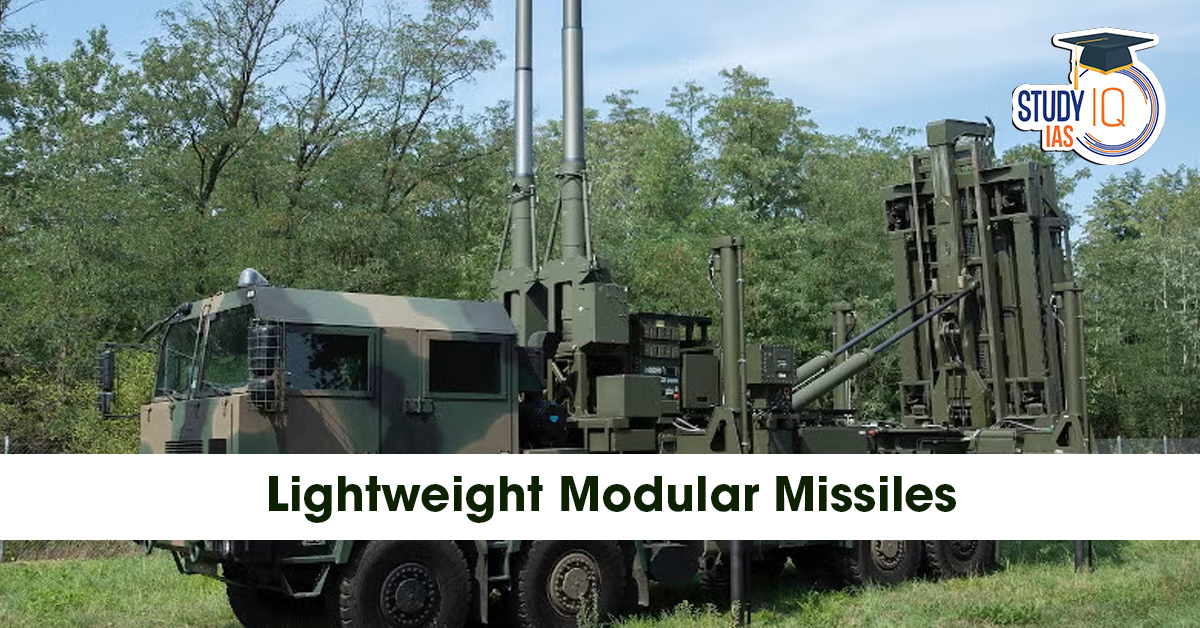Table of Contents
The Indian Army has signed a major contract with UK defence firm Thales to procure the Light Weight Modular Missile (LMM) system — a compact, man-portable multirole missile built to counter modern aerial threats such as high-value drones, loitering munitions and other low-signature aerial targets. The deal — reported at roughly £350 million (about $468 million) — forms part of a wider India–UK defence and industrial cooperation package announced during recent high-level talks.
What is the LMM?
The Light Weight Modular Missile (LMM) — also marketed as Martlet in some settings — is a small, multirole missile developed by Thales for flexible deployment across naval, air and land platforms. It is engineered to be:
-
Man-portable (tripod/shoulder launchable) and modular (easily integrated on vehicles, light armoured platforms, helicopters and naval mounts).
-
Multirole: effective in short-range surface-to-air, surface-to-surface and air-to-surface roles — especially optimised to defeat small, fast targets and swarms of unmanned aerial systems (UAS).
Key Features & Capabilities
-
Guidance: Primarily uses laser beam-riding guidance — the missile “rides” a laser beam projected from the launcher to the target — providing robust performance in cluttered environments and strict rules-of-engagement scenarios. Thales has also developed variants with infrared terminal seekers and options for semi-active laser or GPS/INS aids for expanded mission flexibility.
-
Weight & Dimensions: The missile is very light (approx. ~13 kg), short (~1.3 m length, ~76 mm diameter in public specs), making it easily portable by infantry or mountable in larger numbers on light platforms.
-
Range & Speed: Operational range is in the several kilometres bracket (manufacturers cite ranges >6 km in some configurations) and it achieves high sub-sonic to trans-sonic speeds suitable for engaging fast small targets. Exact performance varies with launcher and variant.
-
Warhead & Kill Mechanism: Designed with a small high-explosive fragmentation or shaped-charge warhead optimised to neutralise small aerial targets and lightly armoured surface threats. Some variants include proximity/laser sensors for terminal detonation.
Deployment Modes
LMM’s modular design supports multiple deployment configurations:
-
Man-portable / Tripod launcher for infantry air-defence teams (rapid reaction against drones and UAS).
-
Vehicle-mounted launchers (light armoured vehicles, trucks, or tracked vehicles) for mobile air-defence.
-
Helicopter and unmanned platforms — integration tested and fielded in other armed forces, enabling anti-surface and air engagement from airborne platforms.
-
Naval integration — compact, clutter-resistant laser beam-riding seeker makes LMM attractive for littoral ships and helicopter-borne roles.
Why India Procured LMM: Operational Rationale
-
Countering Drone Threats: Modern conflicts and asymmetric threats increasingly include small drones and loitering munitions. LMM is tailored to detect and destroy such low-signature, agile targets at short ranges — a capability India urgently needs post recent operational lessons.
-
Tactical Flexibility: Lightweight, portable short-range missiles complement medium- and long-range air-defence systems by creating layered defences — particularly important for protecting forward formations, critical infrastructure and mobile columns.
-
Rapid Integration: Its modularity allows quick integration with existing platforms (armoured vehicles, helicopters, naval helicopters) and new launchers — accelerating operational fielding.
Industrial and Strategic Dimensions
-
Jobs & Supply Chain: The UK reported the contract would secure hundreds of jobs (notably in Northern Ireland) and boost Thales’ production lines — underlining defence industrial ties between India and the UK.
-
Bilateral Defence Collaboration: The LMM deal sits alongside other headline cooperation, such as an Implementing Arrangement on electric-propulsion systems for Indian naval ships (initial package ~£250 million) — signalling deeper tech and defence industrial collaboration.
Limitations & Considerations
-
Short-Range Role Only: LMM is not a medium/long-range SAM — it fills a tactical short-range niche and must be integrated into a layered air-defence architecture.
-
Countermeasures & Saturation: Effectiveness against large saturated drone swarms depends on numbers, sensors, and fire-control network; complementary sensors and integrated command and control are essential.
-
Technology Transfer & Localisation: Long-term strategic value will depend on transfer-of-technology, local assembly or licensed production — areas India typically seeks in major defence deals.
Global Users & Operational History
LMM/Martlet has been adopted or tested by the UK armed forces and integrated onto helicopters and light vehicles. It has seen operational deployments and has been supplied in limited numbers to partners in recent conflicts where small, agile aerial threats mattered. Thales has continued to evolve variants (IR terminal seekers, semi-active laser) to meet diverse mission sets.
What This Means for India’s Air-Defence Posture
The acquisition indicates a shift towards flexible, distributed air-defence approaches — protecting forces at the tactical level from drones, UAVs, and other short-range aerial threats. When combined with layered radars, point-defence guns, and medium-range SAMs, LMMs offer an important short-range kill chain that enhances force survivability and anti-UAS resilience.
Conclusion
The LMM acquisition is a pragmatic, near-term step to bolster India’s tactical air-defence against contemporary threats. Its lightweight, modular architecture makes it a force multiplier for formations operating in contested environments — provided it is paired with effective sensors, command networks and, ideally, localisation pathways to generate sustained strategic value.


 Cloud Disruptions and Their Impact on th...
Cloud Disruptions and Their Impact on th...
 Anagyrus lopezi: The Parasitic Wasp That...
Anagyrus lopezi: The Parasitic Wasp That...
 Prussian Blue Capsules: A Critical Medic...
Prussian Blue Capsules: A Critical Medic...




















